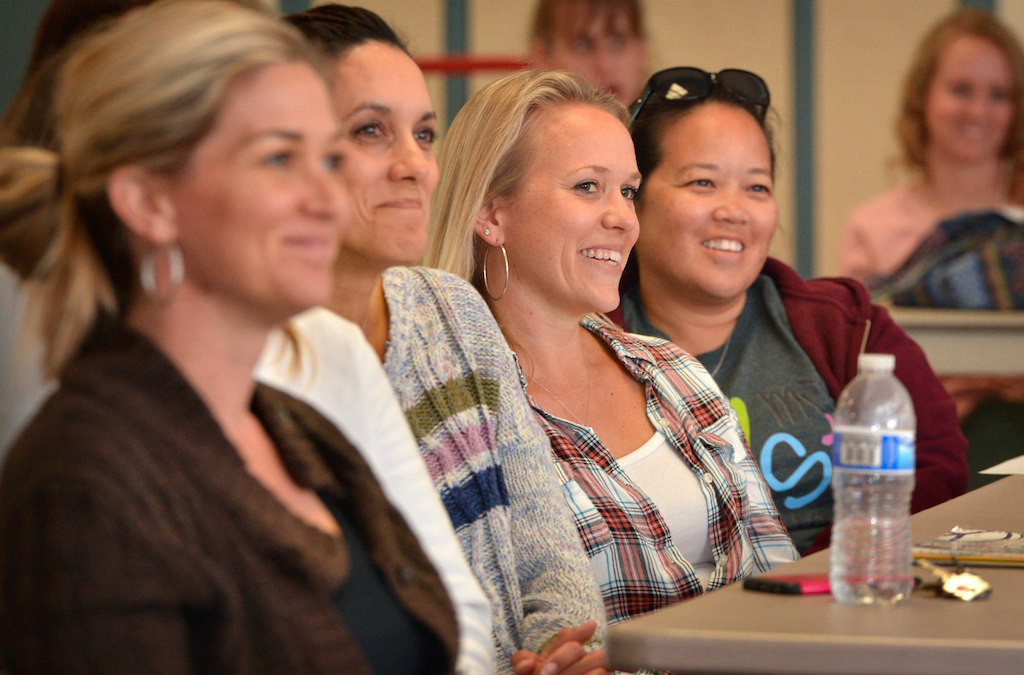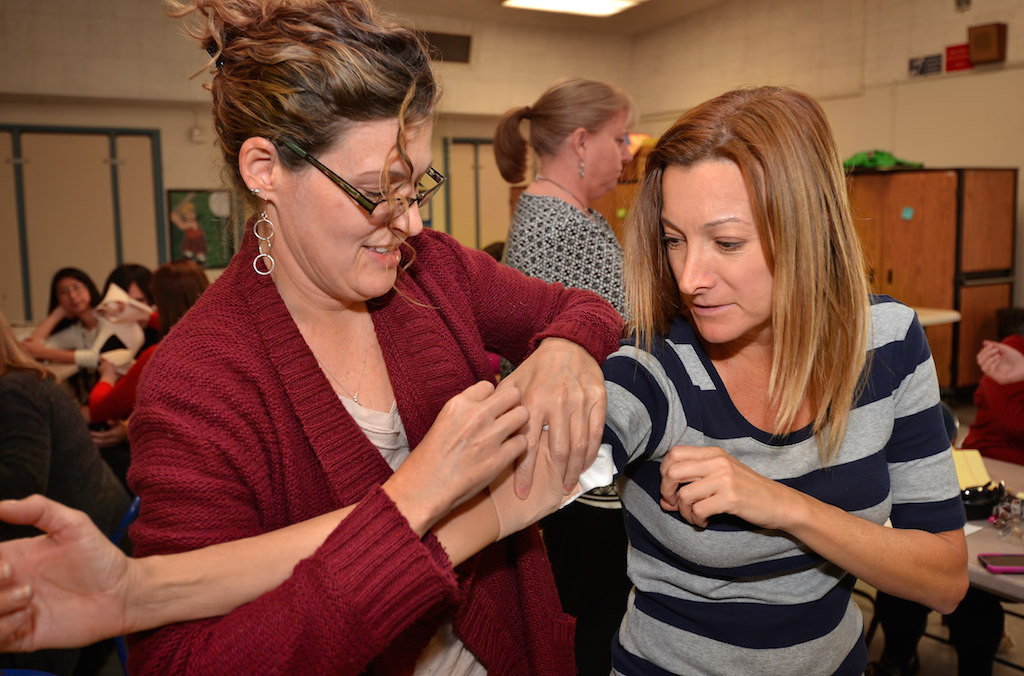When Rachel Partida became a teacher at Westmont Elementary 11 years ago, learning how to handle a gunman threatening her class or how to treat a bullet wound are skills she never thought she’d need.
That changed on Dec. 12, 2013.
“After Sandy Hook (the possibility) became more real,” she said. “After that, I was standing in front of my classroom thinking about what I would do if a shooter came in.”
The teachers at Westmont are training to prepare emergencies with injuries that can’t be remedied with cotton balls and Band-Aids — which make up the entirety of first aid supplies in teachers’ classrooms.
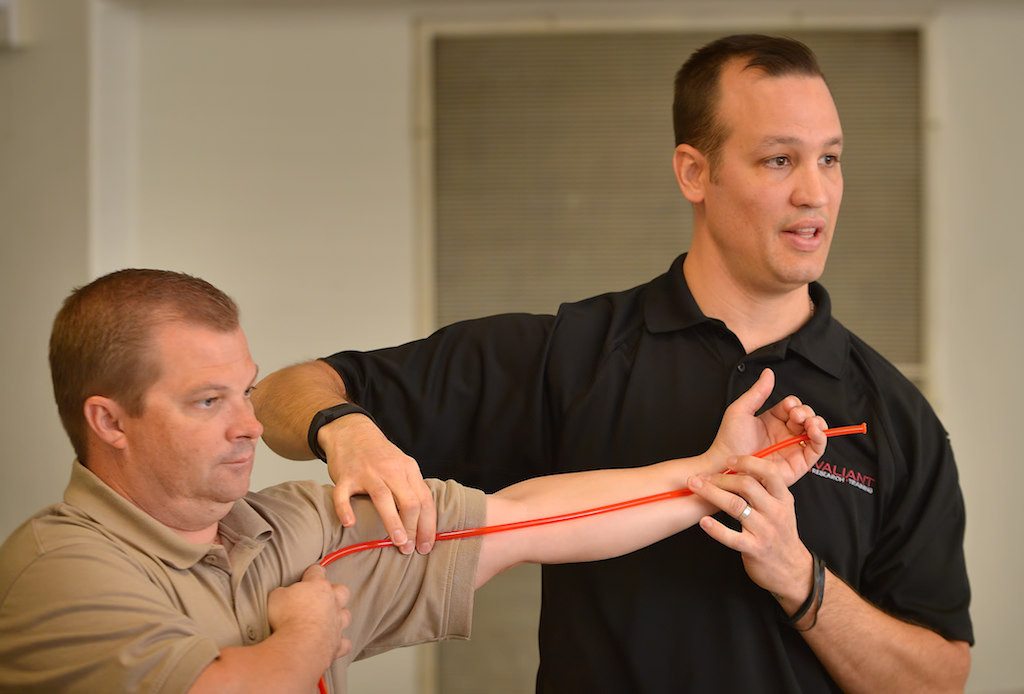
Todd Baldridge, MPD, EMT-P, left, and Joshua Bobko, MD, both of Valiant Research, demonstrate to a group of teachers from Westmont Elementary the location of the Breakerial autuary (sp?) during a first responder training seminar at their school in Westminster.
Photo by Steven Georges/Behind the Badge OC
Westminster police reserve officers Josh Bobko, an emergency physician, and Todd Baldridge, an Orange County Fire Authority firefighter paramedic, on Monday worked with about 30 teachers as part of a series of training courses through their company Valiant Research to equip educators with life-saving skills.
Valiant has also trained hospitals, security personnel and municipal employees.
“I just want all (teachers) to have some idea how to approach a problem when something happens,” Bobko said. “With just a little bit of intervention at the time somebody is hurt, you can keep people alive.”
The strategies the teachers learned could be applied to injuries in the aftermath of an earthquake or a freak accident on the playground, as well as an active shooter scenario.
Teachers learned how to stop massive bleeding, treat severe puncture wounds and tourniquet an amputated limb or serious laceration.
“Knowing how to treat something like this right away is a life and death procedure,” Baldridge said.
Teachers learned how to stop massive bleeding, treat open chest wounds and tourniquet serious injuries or amputated limbs. Teachers were instructed on the Tactical Emergency Casualty Care medical guidelines, which have become the recognized standard of civilian pre-hospital care.
After taking in all the information, the teachers put their skills to the test.
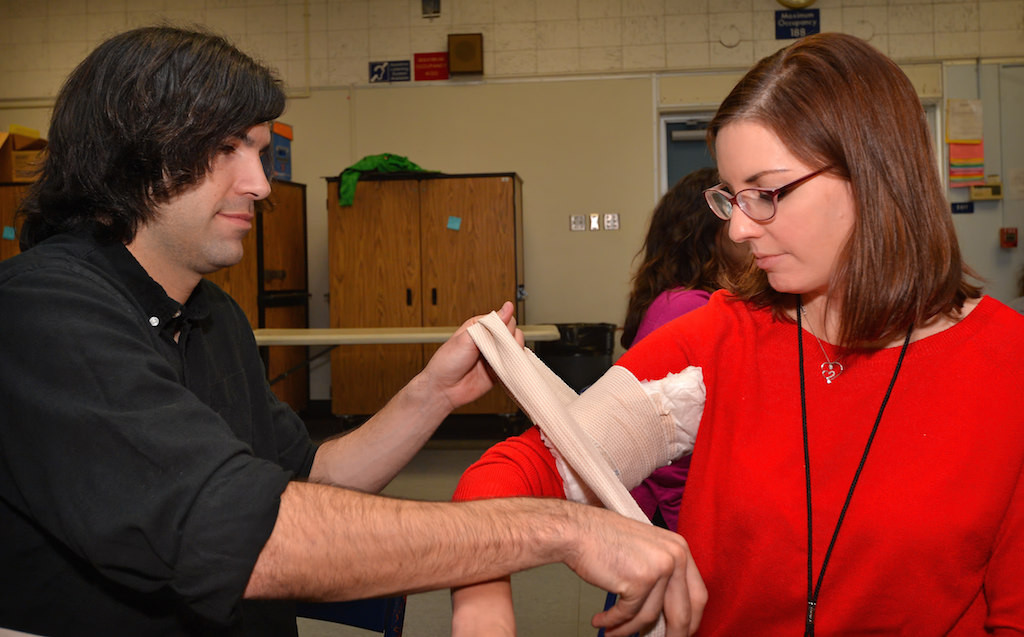
Tyler Leon, special education teacher, left, and Kelly Perrotta (sp?) school psychologist, both from Westmont Elementary, practice applying an ace bandage on each other during a First Responder training seminar at their school in Westminster.
Photo by Steven Georges/Behind the Badge OC
Using blue painter’s tape, Bobko simulated wounds on the arms, legs and chest of some of the participating teachers while others were tasked with assessing and treating the injuries.
“Practicing it makes you feel more confident,” Partida said.
Confidence to act in an emergency is the goal, said Westminster Deputy Chief Dan Schoonmaker.
“We want to get these teachers to a very high level of comfort then put them through a drill,” he said. “If it makes a difference, and we can show that it makes a difference, we’ll take this out to the community.”
The Westminster Police Department has tapped Wesmont Elementary to be the first in the city to undergo an intensive emergency preparedness training.
Teachers already had one session where they learned “run, hide, fight” — an active shooter survival technique.
They will have several more trainings before a full-fledged role play event planned for spring that will include police, fire, SWAT and volunteer victims.
Schoonmaker said they want to run the same drill with teachers who have not received training to measure the impact of these courses.
“The goal is to have a community of people who are ready to jump in during in an emergency, ready to provide first care,” Schoonmaker said.
At the beginning of Monday’s course, Schoonmaker asked the teachers how many felt comfortable handling an active shooter scenario.
Nobody raised their hand.
By the end, all the teachers said they felt better equipped.
“We want to get this to the point that when we say, ‘we’re going to run an active shooter drill’, it’s as routine as running a fire drill,” Schoonmaker said. “We’re going to continue to build (their) level of confidence.”
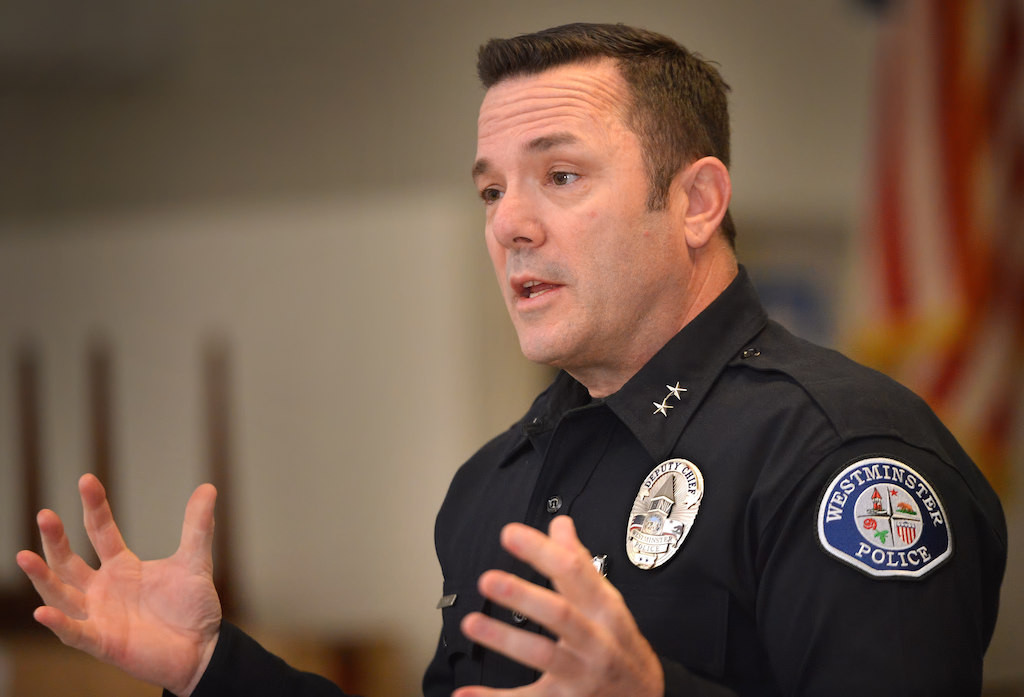
Deputy Chief Dan Schoonmaker addresses teachers from Westmont Elementary at the start of a First Responder training seminar at their school in Westminster.
Photo by Steven Georges/Behind the Badge OC
Here is a look at some of what Valiant Research shared with teachers on Monday:
Following the Be SAFE and CARE plan helps the teachers organize their actions during critical incidents.
Situational
Awareness
Find Safety
Emergency call
Critical bleeding
Airway
Respiratory
Everything else
 Behind the Badge
Behind the Badge
